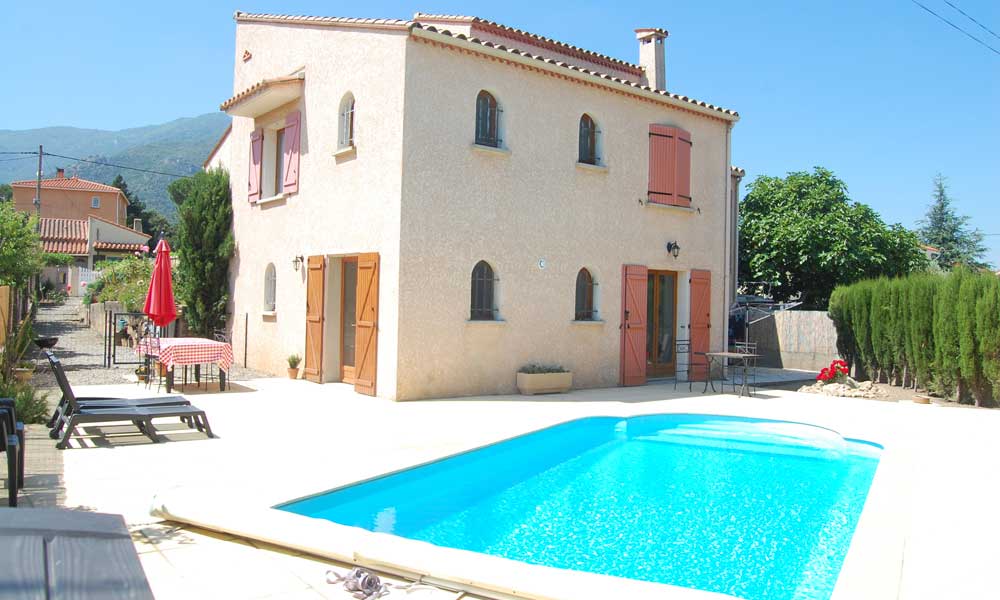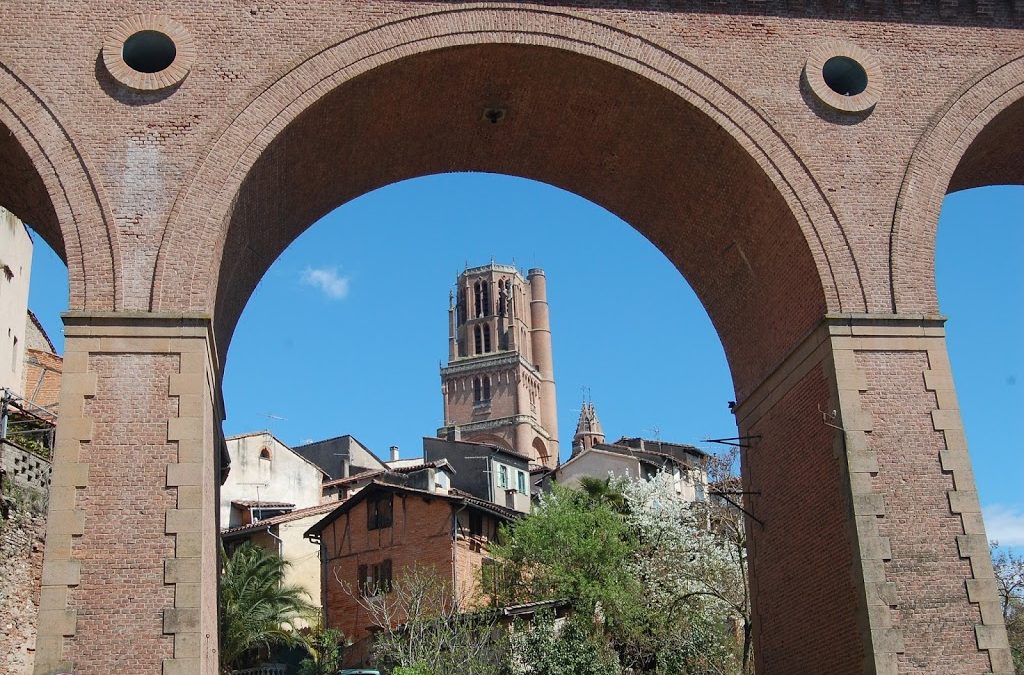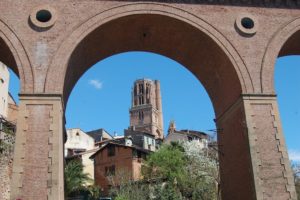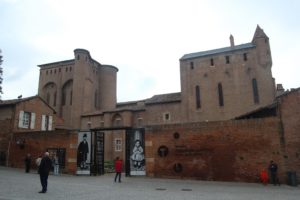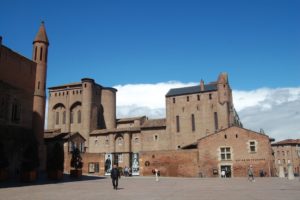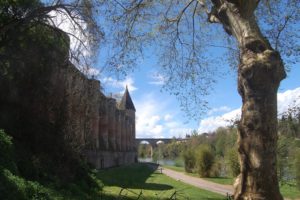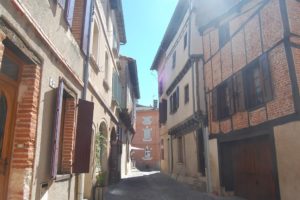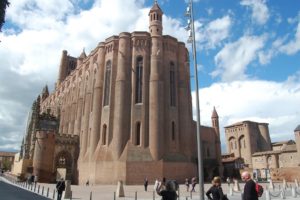The river that runs through the city is of course the Tarn, which also gives its name to the department where Albi resides. The oldest of the three bridges that cross the Tarn in Albi is the Pont-Vieux. The other two are the Pont du 22 Aout 1944 and the Pont SNCF (I’ll leave you to guess what type of bridge this one is)
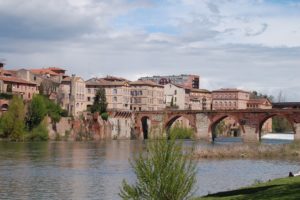 |
| Pont Vieux |
 |
| Pont Vieux |
 |
| Pont SNCF
There is of course a relationship between the Cathars and the city of Albi, hence the reason the reason why the crusade, led by Simon de Montfort for a time, against the Cathars was referred to as the Albigensian Crusade. Saint Bernard visited the city in the 13th century and received a very poor welcome. He consequently branded the city’s inhabitants as heretics. That was a bit of a surprise because the city did remain loyal to the Roman Catholic faith and rallied to the crusaders cause, saving them from the wrath of the crusaders and eventually leading to the erection of the Palais de Berbie to act as a fortified bishop’s palace along with an austere catehdral which stood as symbols of the Roman Catholic’s power and demonstrated their victory over the heresy that Catharism was claimed to be!
Albi is not all about ancient history, there are a number of 21st century developments which include Vigan Square, the Pierre Amalric media library, the Cordeliers cultural district and of course the Grand Theatre designed by international architect Dominique Perrault.
It is the Episcopal City that has gained UNESCO world heritage status however (in 2010) being one of the largest brick buildings in the world. It is made up of four areas: The Castelvieil, The Castelnau, The Bourg Saint Salvis and the Combes-Berges du Tarn. More or less made up entirely of medieval architecture and dominated by the ‘Sainte-Cecile Cathedral and of course the ‘Palais de la Berbie’.
So there you have it the fabulous city of Albi in all its glory only an hour or so from our gite in France with a ‘petite train’ for those that like a guided tour without too much walking involved and of course you can make a day of it by calling into Lautrec medieval village on the way back for even more fabulous views and a look at the birthplace of Toulouse-Lautrec’s family.
. |
